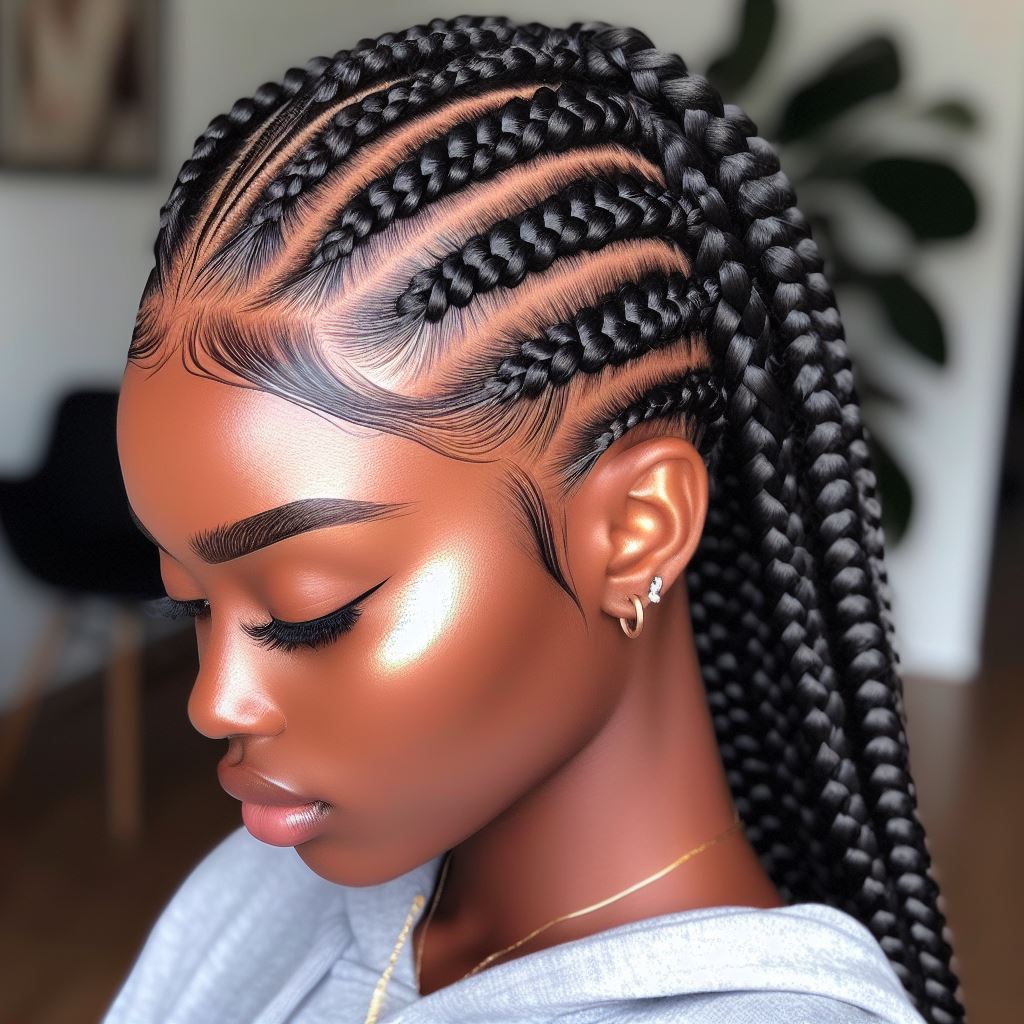Braiding hairstyles for black women have a rich history deeply rooted in African culture and tradition. These hairstyles not only serve as a form of self-expression but also carry significant cultural and social meanings. In South Africa, braiding has evolved into a diverse and vibrant art form, with various techniques and styles being embraced by women of African descent. This essay delves into the cultural significance of braiding hairstyles for black women, explores popular braiding techniques, and showcases samples of braided hairstyles in South Africa.

The Cultural Significance of Braiding Hairstyles
Braiding has been a longstanding tradition in many African societies, with different braiding styles holding specific cultural and symbolic meanings. Historically, braided hairstyles were used to signify social status, marital status, age, ethnicity, and even religious beliefs within African communities. Braids were also a means of communication, with intricate patterns and designs conveying messages about identity, heritage, and belonging.
In contemporary times, braiding continues to be an integral part of African culture, serving as a link to ancestral traditions and a celebration of cultural heritage. For black women, braiding hairstyles are more than just a fashion statement; they are a form of self-affirmation, empowerment, and pride in one’s identity. Braids allow women to embrace their natural hair texture, celebrate their roots, and assert their cultural identity in a society that often marginalizes black beauty.
Popular Braiding Techniques
1. Box Braids
Box braids are one of the most popular and versatile braiding styles among black women in South Africa and around the world. These braids are characterized by small, square-shaped sections of hair that are divided and tightly braided from the scalp to the ends. Box braids can be styled in various lengths, thicknesses, and colors, offering endless possibilities for creativity and self-expression.
2. Cornrows
Cornrows, also known as canerows or braids, are narrow, closely woven braids that are flat against the scalp. Cornrows can be styled in straight lines, intricate patterns, or geometric designs, making them a versatile and timeless hairstyle choice. In South Africa, cornrows are often adorned with beads, shells, or cowrie shells, adding cultural embellishments to the hairstyle.
3. Senegalese Twists
Senegalese twists, also called rope twists or Senegalese braids, are created by twisting strands of hair together to form long, rope-like braids. These twists are often installed using extensions, giving the hairstyle added length and volume. Senegalese twists are known for their durability and low maintenance, making them a popular choice for black women with active lifestyles.
4. Fulani Braids
Fulani braids, inspired by the Fulani ethnic group of West Africa, are characterized by a distinctive pattern of thin, intricate braids combined with cornrows or twists. These braids are often adorned with beads, shells, or metallic accessories, adding a touch of cultural flair to the hairstyle. Fulani braids are a symbol of beauty, femininity, and cultural pride among black women.
Samples of Braided Hairstyles in South Africa
1. Zulu Knots
Zulu knots, also known as Bantu knots or Nubian knots, are small, coiled buns created by twisting sections of hair and wrapping them into tight knots. These knots are popular among Zulu women in South Africa and are often worn as a protective hairstyle or as a precursor to other styles such as twist-outs or braid-outs.
2. Xhosa Amasunzu
Amasunzu, a traditional hairstyle worn by Xhosa women in South Africa, is characterized by its intricate patterns and geometric designs. This hairstyle is created by braiding the hair into tight coils or spirals and then arranging them into elaborate patterns on the scalp. Amasunzu is often adorned with beads, shells, or other decorative elements, symbolizing cultural identity and beauty.
3. Ndebele Dikapapa
Dikapapa, a traditional hairstyle of the Ndebele people in South Africa, features rows of tightly braided cornrows that are arranged in a symmetrical pattern on the scalp. These braids are often adorned with colorful beads, buttons, or cowrie shells, symbolizing cultural pride and heritage. Dikapapa is worn by Ndebele women as a symbol of beauty, femininity, and cultural identity.
4. Pedi Mabhanzi
Mabhanzi, a traditional hairstyle of the Pedi people in South Africa, is characterized by its voluminous, twisted braids that are arranged into a large, elaborate bun on the crown of the head. These braids are often adorned with beads, feathers, or other decorative elements, symbolizing cultural heritage and social status. Mabhanzi is worn by Pedi women on special occasions such as weddings, coming-of-age ceremonies, or cultural celebrations.
In conclusion, braiding hairstyles for black women serve as a powerful form of cultural expression, self-identity, and beauty. In South Africa, braiding techniques and styles are deeply intertwined with the country’s diverse cultural heritage, reflecting the traditions and customs of different ethnic groups. From traditional styles passed down through generations to contemporary interpretations influenced by global trends, braided hairstyles continue to evolve and thrive as a symbol of pride, resilience, and cultural unity among black women in South Africa and beyond.
